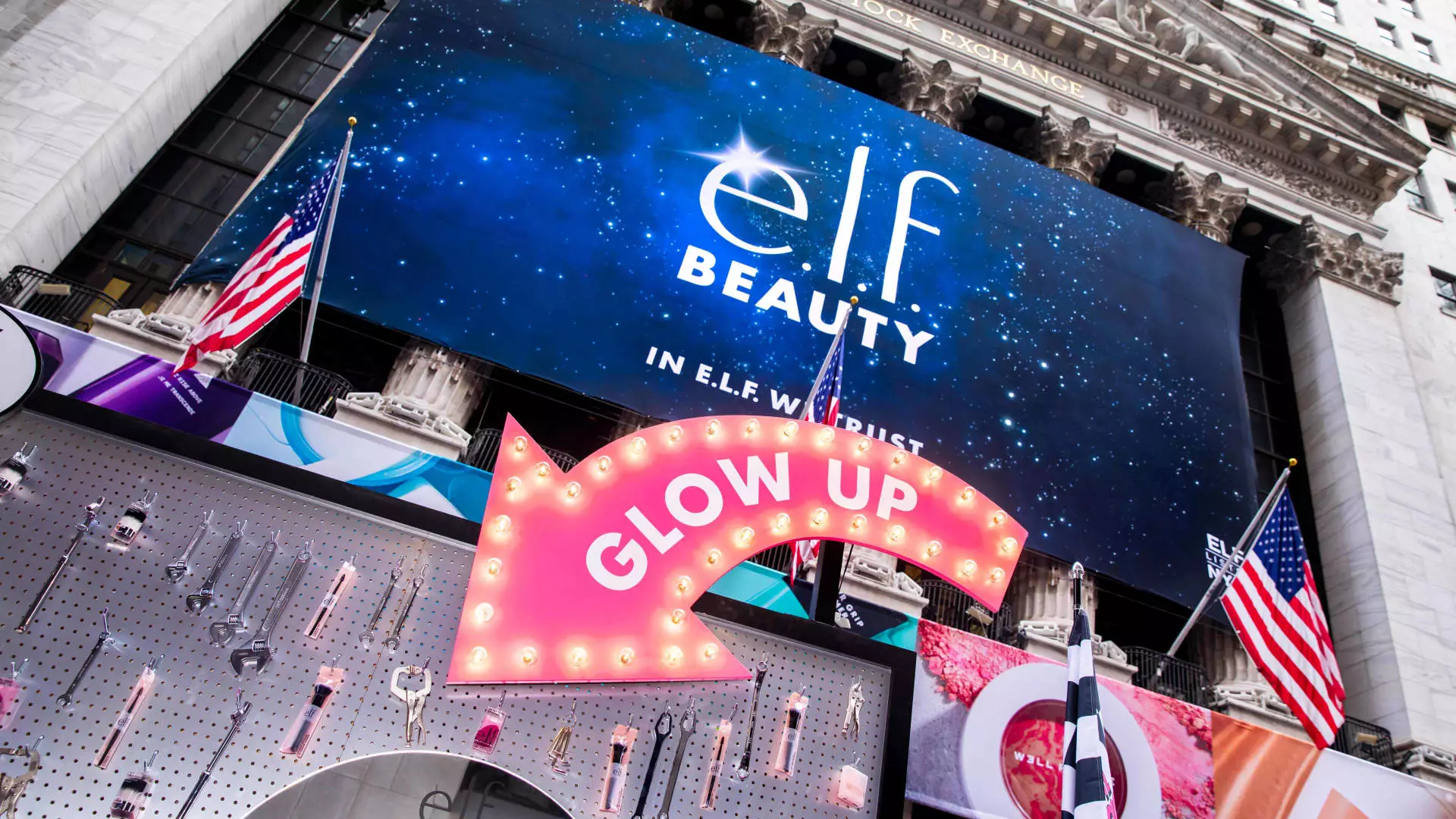The current economic landscape is becoming increasingly complex for businesses with substantial international supply chains, particularly in the cosmetics industry. E.l.f. Beauty, a company well-known for manufacturing affordable beauty products, finds itself at the center of this evolving situation, where the imposition of tariffs has stirred both relief and concern among executives. As the CEO, Tarang Amin, shared insights after the announcement of a 10% tariff on Chinese imports, his commentary encapsulated the difficult balancing act that many companies confront in a globalized economy.
Understanding the Tariff Implications
When President Donald Trump decided to implement a new 10% tariff on goods from China, E.l.f. Beauty’s leadership initially expressed a sense of relief, especially when faced with the specter of potentially much higher tariffs of up to 60%. Amin articulated this sentiment, reflecting a pragmatic attitude toward economic volatility. The quick shift in tariff expectations illustrates the unpredictable nature of international trade, where businesses must adapt rapidly to changing political climates. E.l.f.’s significant dependence on Chinese manufacturing—approximately 80% of its products are produced there—heightens the stakes involved in tariff-related decisions.
As Amin considers whether price increases are necessary for their products, it becomes evident that companies like E.l.f. are caught in a double bind. On one hand, they must ensure competitive pricing to maintain their market share; on the other, they face rising costs that could erode profit margins. The uncertainty surrounding tariffs makes it challenging for E.l.f. and similar companies to arrive at a decisive strategy regarding their pricing models.
Strategic Adaptations Amidst Uncertainty
Significantly, E.l.f. has already taken proactive measures. Historically, when faced with substantial tariffs in the past, the brand responded by raising prices on a third of its items. This approach yielded positive consumer feedback, indicating that even amidst price hikes, customers remained loyal. Presently, however, E.l.f. appears to be in a more advantageous position than it was previously, having effectively reduced its dependence on Chinese manufacturing by about 20%. The company’s strategic pivot effectively positions it to buffer some of the adverse financial impacts that tariffs can induce.
Moreover, an expanded international presence means that E.l.f. can mitigate potential losses in the U.S. market. As the company diversifies its sales channels, it becomes less vulnerable to the fluctuations of American tariffs or trade relations. This diversification is crucial, as companies increasingly recognize the importance of global markets in contributing to overall revenue, especially in uncertain economic climates.
Amin’s cautious optimism is also noteworthy, as it hints at the company’s understanding of consumer behavior in response to pricing changes. E.l.f. has built its brand around affordability, successfully positioning itself as a purveyor of “dupes” for high-end cosmetics. The brand must remain attuned to its consumers’ perceptions and sensitivities toward price changes. A balanced approach that seeks to offset tariff impacts without alienating its core customer base is fundamental for E.l.f.’s long-term success.
As the company navigates these tumultuous waters, the prospect of fluctuating tariffs and their consequent effects on consumer pricing strategies will continue to dominate discussions within corporate boardrooms. E.l.f. Beauty’s journey through this challenge serves as a case study on navigating the intricacies of global trade in a shifting economic environment.
Ultimately, E.l.f. Beauty’s response to tariff challenges reflects a broader narrative in the business world. As companies grapple with increasing uncertainty, agility and foresight become essential traits. The beauty industry, given its global supply chains and diverse consumer bases, must remain vigilant. For E.l.f., the focus on strategic adjustments, brand loyalty, and proactive planning could very well be the key to thriving amidst the economic turbulence that tariffs create.
As the situation continues to evolve, one thing remains clear: Companies like E.l.f. Beauty will need to remain adaptable, strategic, and, most importantly, consumer-focused to navigate the complexities introduced by international trade dynamics effectively.

